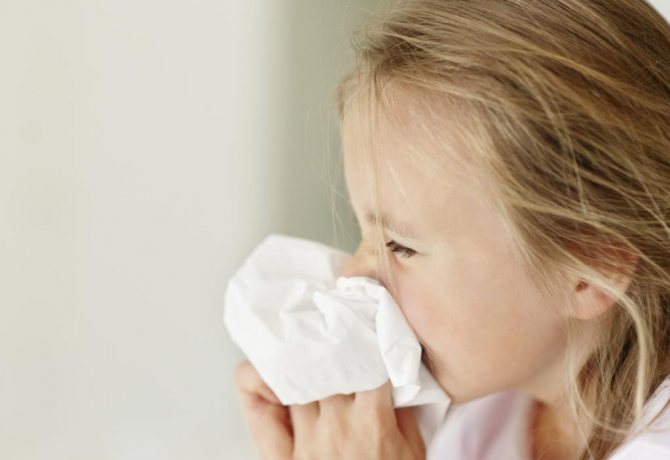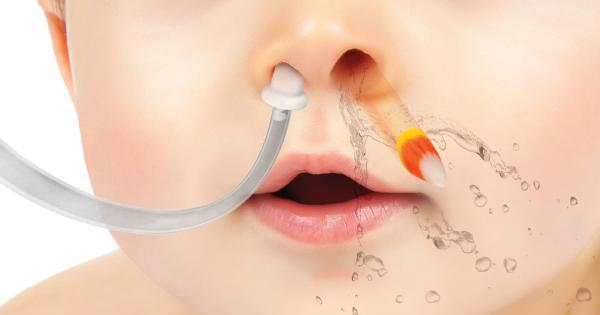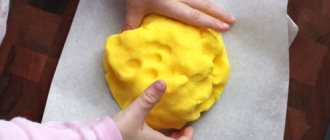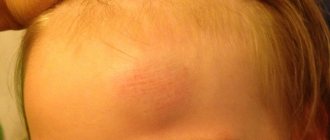A child stuck a seed in his nose, what should I do?
Most troubles with children happen due to the carelessness of adults. Not everyone watches what the baby is doing and what he is playing with at the moment. That's why kids fall out of windows, swallow batteries, and stick various small objects into their noses, ears, and other openings in their bodies.
And you can blame yourself as much as you like, cry and lament, but when the job is done, you can only trust in the doctors and God. Today we will talk about this case: a child stuck a seed in his nose, what should parents do? Foreign bodies entering the respiratory tract are not new to doctors; several such babies end up in the emergency room every day. This article will tell you how to act correctly in such a situation, and how not to harm the baby with excessive activity.
A child stuck a seed in his nose, what to do and what not to do?
- Look into the lumen of the nostril; if the seed is shallow, then perhaps you will see something black in its lumen. Under no circumstances should you try to get it out yourself with tweezers, push it with a cotton swab, or whatever else your imagination tells you. This could be life-threatening.
- Make sure that the child does not touch his nose.
- Call an ambulance or go urgently to a hospital emergency room or to an ENT specialist at a clinic. Tell the receptionist that there is a foreign object in your nose; they will probably serve you without a queue.
- An ENT specialist has the necessary tools and skills for such situations. Your task is to calm the child so that he does not scream or struggle.
- Also, you should not put pressure on the wing of the nose, trying to push out a foreign object, or feed or water the child.
- You cannot breathe air into your nose and rinse the nostril yourself.
- You should not give pepper a sniff to induce sneezing, as the child will take a deep breath before sneezing, which can push the seed even deeper.
It will go away on its own.
The child stuck a seed in his nose, what should you do, you think. If there is someone in the family who believes that sooner or later it will fall out on its own, then he is very mistaken. Of course, there is a possibility of such an outcome, but it is too small to risk it. The main danger of this condition is that, along with inhalation, the seed can enter the trachea and bronchi. Sometimes small objects get deep enough that they cannot be reached with the most modern bronchoscope. Then aseptic pneumonia is inevitable, which is poorly treated even with the strongest antibiotics.
Another danger is that the protective reflex of laryngeal spasm may be triggered, and then the baby faces suffocation.
Of course, this happens quite rarely, but it does happen, so do not underestimate the current situation - call an ambulance.
How does a foreign body enter the nasal cavity?
A child puts a bead in his nose (we will tell you what to do in this case later) - this is not the only way for a foreign object to get into the sinuses. Probabilities here are divided into external and internal.
External routes of entry are as follows:
External routes of entry are:
- The child choked on food. With intense coughing, food particles may enter the nasal cavity through the choanae.
- The child vomited. Some of the vomit may end up in the nose through the same route.
Foreign body in the nose: first aid for a child
Children love to explore the world around them, and endlessly try to put everything that comes to hand into their noses, ears and mouths - buttons, beans, toys, etc. Everyone knows that babies need an eye and an eye. But mothers very often do not have time to keep an eye on the child before he already has a foreign body in his nose. What to do in this case, how to provide first aid to your child and how to avoid this - you will find answers to these and other questions in our article.
Foreign bodies most often get into the nose of young children (up to 5-7 years). While playing, children stick a wide variety of objects into their own and their friends' noses. In addition, a foreign body can enter the nose due to injury, or during vomiting through the nasopharynx. In older children, cotton swabs are sometimes found in the nose, which were placed in them to stop nosebleeds.
What foreign bodies can be in a child’s nose?
- Organic (pieces of food, fruit seeds, plant seeds, matches, pieces of paper, etc.).
- Live foreign bodies (insects, esophageal worms, leeches, larvae).
- Inorganic (buttons, stones, beads, parts of toys, sponges, pieces of foam rubber, paper, cotton wool).
- Metal (coins, buttons, badges, nails, pins, needles, etc.).
- By what signs can you understand that a child has a foreign body in the nose?
The main and sometimes only sign of a foreign body in the nasal cavity is one-sided nasal congestion.
If a foreign body remains in the child’s nose for a long time, purulent discharge mixed with blood may appear, a putrid odor from the corresponding half of the nose, especially if the organic foreign body is decomposing, and irritation of the skin at the entrance to the nose may occur.
The first reactions to a foreign body (sneezing, lacrimation, watery discharge) most often disappear quickly.
What is the danger of a foreign body in the nose?
Prolonged stay of a foreign body in the nasal cavity leads to the formation of rhinoliths (nasal stones), the development of inflammation of the nasal mucosa and the appearance of a bleeding wound.
Unsuccessful attempts to remove a foreign body further injure the mucous membrane, cause bleeding, and the foreign body moves deeper into the nasal cavity, into the nasopharynx, from where it can enter the respiratory tract and esophagus.
How to avoid foreign objects getting into your child's nose?
This is not so easy to do. The most important thing is constant supervision of the kids, and older children need to be explained that they can’t put anything in their nose. Do not buy toys for children that are not intended for their age: children's construction sets and games should not contain small parts that a child can put in his or her nose. It is necessary to avoid injuries to the face, and in particular to the nose area. Prevent your child from worms and other parasites. To avoid getting leeches in the nose, do not allow your child to dive in open water. If water does get on his face, carefully examine the baby after bathing. What should you do if your child puts something up his nose?
There is a simple but very effective technique for removing foreign bodies from the nose called “mother’s kiss,” which was described back in 1965 by general practitioner Vladimir Stibor in the New English Journal Medicine.
What is the “mom’s kiss” technique?
— Place your lips firmly on the child’s mouth — With one finger, press firmly on the nostril free of the foreign body — Exhale forcefully into the child’s mouth — The air will “squeeze out” the stuck foreign body.
This technique has shown very good results - its effectiveness is about 60%. Although it is still recommended to perform the “mother’s kiss” technique in the presence of a doctor.
Important! Follow the recommendations described above to prevent a foreign body from pushing deeper into the nasal cavity and entering the respiratory tract.
Important! To avoid displacement of a foreign body into the deep parts of the nose, nasopharynx and respiratory tract, it is prohibited to remove round foreign objects from the nose with tweezers or forceps. This does not apply to foreign bodies of other shapes (matches, pieces of paper, rubber, etc.).
Diagnostics
It is often very difficult to make a diagnosis, because foreign bodies most often get into the child’s nose when no adult sees it. And only when the disease develops do all its circumstances become clear.
To detect a foreign body in the nose, an x-ray is performed. If this diagnostic method does not give the desired effect, other research methods are used.
Foreign body in the nose: treatment
If a child gets a foreign body in the nose, contact a pediatric otolaryngologist . A foreign body from the nasal cavity is most often removed on an outpatient basis (on site), but if complications arise, hospitalization may be required.
The easiest way is to blow your nose after instilling a vasoconstrictor solution. This technique is most effective for small foreign bodies.
If the foreign body does not come out, it is removed under local anesthesia using a blunt hook. In severe cases, this operation is performed under anesthesia.
Do not leave your child unattended! And be healthy!
Classification of foreign bodies
Yes, it turns out that not everything is so simple. Let's say a child puts a ball, a vitamin, a bead, or a construction piece in his nose. Based on the time they remain in the nasal sinuses, such foreign bodies will be divided into several groups:
- Spicy. Those that just recently ended up in the nose - a few minutes or hours ago.
- Chronic. Those foreign bodies that have been in the nasal sinuses for a long time - days and even months.
- Rhinoliths. The second name is nasal stones. This is the name given to objects that remain inside the olfactory organ for a long time. Most often they are overgrown with connective tissue. The latter is formed due to damage to the mucous membrane and the resulting inflammation.
Types of foreign bodies in the nose
What kind of objects have not been removed from the noses of babies:
- beads;
- small parts of toys;
- buttons;
- cotton wool;
- sponge pieces;
- scraps of paper;
- fruit grains;
- sunflower seeds;
- beans;
- peas, etc.
Pieces of food can get into the nose if the baby chokes during feeding. In this case, food particles enter the nose through the choanae - openings connecting the nasal cavities with the pharynx. Vomit also enters the nose through the choanae. Teeth may be found in the nasal cavity due to improper eruption of canines or incisors. Foreign bodies can enter the nasal cavity due to an open facial injury.
Foreign bodies in the nose can be:
- live (leeches, insects);
- non-living - organic (plant seeds, pieces of fruits and vegetables) and inorganic (pebbles, foam rubber, paper, plastic parts of toys, etc.);
- radiopaque (metal buttons, snaps, screws, etc.) and non-contrast.
Objects can have different shapes and sizes.
Parents are not always able to track the moment a foreign body enters the nose and then do not know for even a long time about its presence in the nose. And sometimes the fact that a foreign object has entered the nose is detected immediately.
When foreign bodies remain in the nasal cavity for a long time, calcareous and phosphorus salts can be deposited in them, resulting in the formation of rhinoliths (nasal stones), sometimes of considerable size.
Defining symptoms
Did your child put a foreign body in his nose? It’s good if one of the adults noticed this or the child himself told about the incident. But what to do if the child does not speak yet or simply forgot about what happened and did not pay attention to it? In addition, some children may deliberately hide their misconduct, fearing punishment from their parents.
The difficulty is that the symptoms of a foreign body in the nose are too similar to the signs of rhinitis or chronic runny nose. That is why it is difficult for a non-specialist to guess what happened.
We list the most typical symptoms:

What to do if you suspect foreign bodies in the nose in children?
Immediately contact a specialized ENT clinic or ENT office to see an otolaryngologist with a mandatory video-endoscopic examination of the nasal cavity. During such an examination, the doctor, using a video camera with additional lighting, magnification and display, will examine all parts of the nose, especially the deep parts that are inaccessible for examination using the usual method used in the clinic. In this case, both the doctor and the parents will be able to see the presence of the foreign body itself, its location and inflammatory changes in the mucosa.
Under the control of a video camera, the foreign body will be removed with tweezers or a special hook for removing foreign bodies from the nose. If necessary, a course of drug treatment will be prescribed for the resulting consequences.
The cost of removing a foreign body from the nose is 1,500 rubles. The cost of removing a foreign body from the external auditory canal on one side with otoscopy is 2000 rubles. The cost of removing a foreign body from the external auditory canal on both sides with otoscopy is 2,500 rubles.
In some cases, if it is impossible to remove the foreign body on an outpatient basis, the child will be sent to an ENT hospital for removal of the foreign body under anesthesia.
Never leave suspicious symptoms unattended, do not wait for complications to form, resolve all doubts as quickly as possible at an appointment with an otolaryngologist!
How to distinguish the acute stage from a runny nose?
There are still a number of signs that will help a parent distinguish a case where a child has stuck an object in his nose from ordinary rhinitis. Below we list the most common ones.
- If a foreign body enters, symptoms will appear only on the side of the affected nasal sinus (unless, of course, the child has inserted beads into both nostrils, which, fortunately, is quite rare). Thus, watery discharge will flow from one nostril, while with a runny nose this process is bilateral.
- Sudden manifestation. As a rule, rhinitis does not develop for no reason - it will be the result of a walk through puddles, a large portion of ice cream, wallowing in the snow, etc. When a foreign body enters the nose, symptoms develop for no apparent reason.
- No other signs of illness. Rhinitis is not only sneezing and nasal discharge. The patient complains of general malaise, weakness, headache, body aches, fever, etc. If a foreign body enters, there are, of course, no such symptoms.
If you have any suspicions that your child put a bead in his nose and did not have a cold, you should definitely share your doubts with your pediatrician.
Summary for parents
It is much easier not to leave children unattended by adults than to eliminate problems that arise later. Left to his own devices, a child can easily create them. One of these problematic situations may be a foreign body in the nose. If this difficulty arises, it is better to entrust the removal of the foreign body to a doctor. Independent manipulations must be carried out very carefully, since inept actions can make it difficult to remove an object from the nose and cause complications.
The program “Live Healthy!” talks about how to remove a foreign body from a child’s nose:
How to distinguish the chronic stage from sinusitis?
If the foreign body is in the nasal sinus for a long time, the symptoms will be similar to those of sinusitis or chronic rhinitis. The child has the following:
- Difficulty in nasal breathing. Moreover, specifically from the side where the foreign body is contained.
- Characteristic discharges periodically come out of the nasal sinus - purulent, purulent-suppurative (that is, with blood streaks). They have an unpleasant odor.
- Purulent crusts periodically form in the child’s nose. This is a consequence of inflammation of the mucous membrane due to a foreign body.
Rhinolith (nasal stone) is characterized by similar symptoms. Children, first of all, complain that it is difficult for them to breathe through their nose. As a rule, a nasal stone is discovered by chance - during preventive medical examinations.
Home help for a child
So, you know that the child put a bead in his nose. What to do? If you can clearly see a foreign object in his nasal sinus, and the bead itself has rolled nearby, then before contacting a specialist, you can try to remove it yourself.
Follow these simple instructions:
We advise you to start removing a foreign body from your child’s nose yourself only if he is over 5 years old. Children at this age can already clearly follow instructions and are easy to calm down. Children need the help of an experienced otolaryngologist.

Treatment of a foreign body in the nose
A foreign body in the nose has a number of dangers, so its removal should occur as quickly as possible so that an inflammatory reaction and swelling do not develop. Otherwise, the extraction process will be significantly more complicated. If a foreign body just gets into the nose, it can be removed by simply blowing it out. The patient should take in air, close his mouth and forcefully blow out the collected air, while covering the healthy nostril with his finger. This method is only suitable for adults and older children.
If adults and small children were unable to remove the foreign body naturally, endoscopic removal is necessary. In young children, the procedure is performed under general anesthesia; for adults, local anesthesia is sufficient. A foreign body is removed surgically very rarely, only in cases where endoscopic removal was unsuccessful.
In addition to the above methods, rinsing the nasal cavity with antiseptic solutions, draining and rinsing the paranasal sinuses, and instilling vasoconstrictor drops into the nose are additionally used. If necessary, complications are treated.
This cannot be done!
If you want to help your child yourself, do not do the following wrong things:
- Don't try to get the bead yourself! Not with your hands, not with tweezers, not with a cotton swab, not with a crochet hook. By these actions you will only push the foreign body deeper, damaging the mucous membrane, which can lead to inflammation and infection.
- Do not rinse your baby's nose with water or any saline solution. This also helps to move the foreign object deeper into the nasal sinus.
- Do not press on the wing of the nose from the side where the bead is in the sinus.
- Do not feed or give your baby anything to drink until he receives medical attention.
Help from specialists
How do otolaryngologists remove a foreign body from the nose? Doctors use several methods:
- Use vasoconstrictor nasal drops, a solution containing adrenaline. The patient is then asked to blow his nose on his own.
- If the attempt is unsuccessful, then doctors turn to local anesthesia with lidocaine (in extreme cases, anesthesia). Depending on the nature of the foreign body, it is removed using special tweezers or a nose hook.
- If rhinolitis or serious internal injury is detected, then surgical intervention is resorted to.

Did your child put a foreign object in his nose? This is an incident that requires immediate assistance to the baby! Now you know what to do correctly in such a situation.
Treatment
Making unsuccessful attempts to remove foreign bodies on your own can injure the mucous membrane, cause bleeding, or push objects into the deeper parts of the nasal cavity. The simplest and safest method available for home use is to blow your nose after instilling vasoconstrictor solutions.
If the foreign body is not released, then the only correct method of treatment will be medical removal. The manipulation is carried out on an outpatient basis using a blunt hook, which is inserted behind the object and, moving along the bottom of the nasal cavity, it is removed. Large and wedged foreign objects are removed under anesthesia, especially after repeated attempts to do this in the usual way.
To remove round foreign bodies, do not use tweezers, forceps or a clamp, since due to the difficulty of grasping, the object is only pushed deep into the nose. Large rhinoliths are first crushed into smaller pieces, after which they are gradually removed. If there are complications (bleeding, purulent rhinosinusitis, osteomyelitis), the child is hospitalized and appropriate therapy is given.
A doctor will help you remove a foreign body from your nose correctly and safely. You just need to seek medical help in time.
Among ENT pathologies in children, foreign bodies in the nasal cavity are quite common. They can have different origins, shapes and sizes, but lead to disruption of nasal breathing, and if left for a long time, provoke inflammatory changes. It is better not to try to remove objects yourself - only a doctor can do this efficiently and safely.









